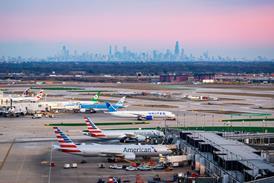S&P Global Ratings has raised concerns that Qantas has under-invested in its fleet and faces large capital expenditure at the same time as it resumes paying company tax.
The warning comes in a report that states that despite recent fanfare over the delivery of Qantas’s eight Boeing 787-9s, its rate of aircraft investment in recent years has been subdued and won’t increase until the 2020 fiscal year.
"Since its financial turnaround in fiscal 2015, Qantas has used surplus capital to fund shareholder returns rather than to grow invested capital. We do not view this as sustainable," says S&P credit analyst Graeme Ferguson.
Although the 787-9s are replacing Qantas’s oldest 747-400s, the agency notes that its 747-400ERs and oldest A330s were delivered in 2003, and thus will be candidates for replacement in coming years.
That could be at the same time that Qantas loses its tax hedge from the major loss reported in the 2015 fiscal year, which is expected in 2020.
Complicating that is Qantas’s conservative capital expenditure policy, which has seen it reticent to take on new debt, and limitations from the Qantas Sale Act on foreign investment that could limit its ability to fund future capital expenditure through issuing new equity.
In that light, the agency urges the carrier to consider not only replacements for its oldest widebodies, but also its narrowbody fleet of 737-800s and the A320s operated by Jetstar.
“The sooner it is commenced, the smoother the funding profile is likely to be. At this stage, we believe Qantas still has some near-term flexibility regarding its renewal program, although this window is narrowing,” the report states.
Qantas chief Alan Joyce has maintained a firm grip on capital expenditure that has seen it delay deliveries of its Boeing 787s and Airbus A320neos for several years. Instead, the carrier has opted to purchase a number of 737-800s and A320s as they come off lease, which has boosted its balance sheet.
The report also highlighted that rival Virgin Australia has a much younger fleet, and is likely to be able to delay its future aircraft deliveries for some time and instead focus on paying down debt.
Both carriers are however at risk of opening up room for a third airline group to enter the Australian domestic market, especially if they end up with an older fleet in coming years.
“We are not there yet, not even close, but these longer-term trends are worth monitoring,” the report adds.
Source: Cirium Dashboard

























